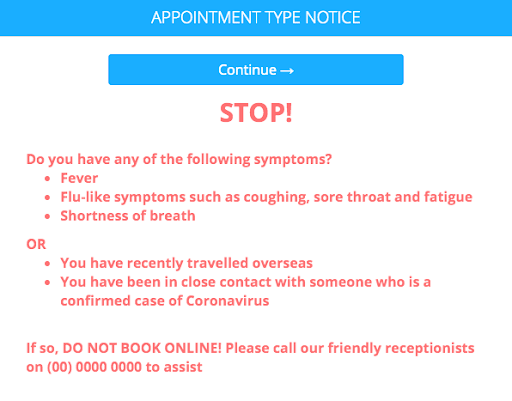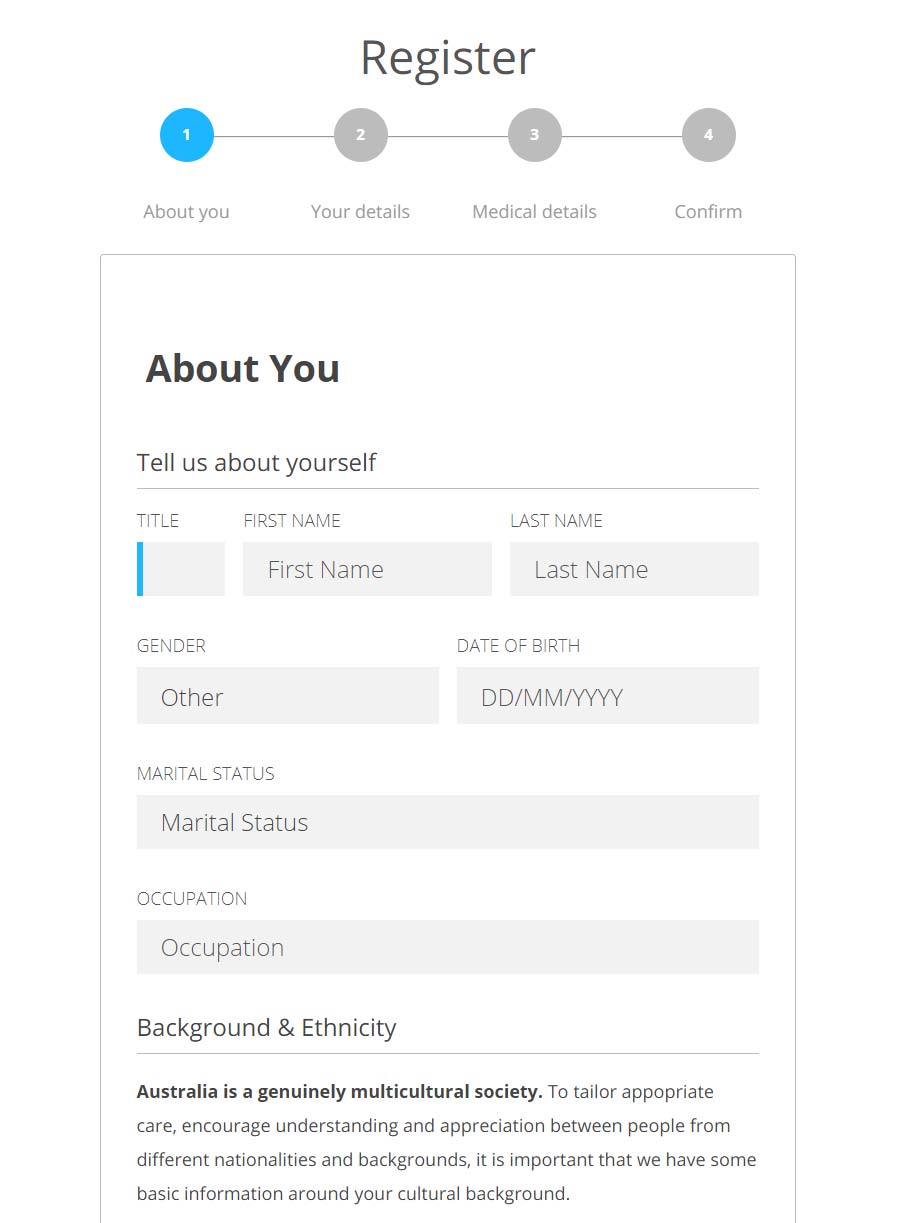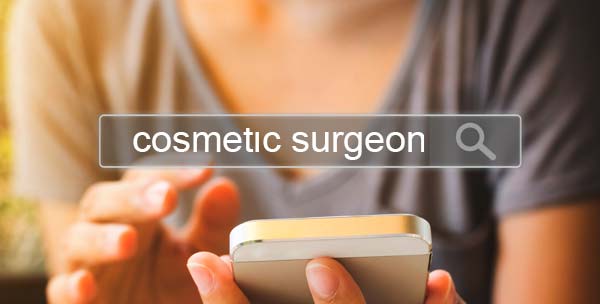The WHO has just officially categorised the COVID-19 virus as a pandemic. Reducing the spread of this virus is paramount. We’ve detailed 7 ways you can implement technology to minimise the impact both on your patients and your business!
Any COVID-19 vaccine is 18 months plus away so there’s a long way to go! We know this virus to be extremely contagious and more harmful than the flu.
It’s time you need to start looking at how technology can assist in reducing the impact this pandemic will have on both your patients and your business as a whole.
Here are some handy tools that can assist in reducing the possibility of transmission by human contact.
- Online Bookings Pre-Screening
Get your patients pre-screened at the time of making an online booking! This way you can easily direct them to the best and most effective methods to treat them. Pre-screening questions will allow you to communicate to your patients the best course of action if they are looking to make a booking with suspected Coronavirus symptoms. The end result you’re after here is that if a patient suspects they have contracted Coronavirus, you don’t really want them in your waiting room for the safety of your patients, staff and doctors.
Check out a live demo of one example of how this can be implemented here: COVID-19 Online Booking Pre-Screening

- Utilise Geo-Located Mobile Check-in
Many practices are opting to triage patients who present with Coronavirus symptoms from their carpark! Utilising mobile check in technology can allow your patients to mark themselves as arrived when they are in your car park. The technology will geolocate them as within a 50m radius of your clinic, and then prompt them to tell you they have suspected Coronavirus symptoms.
- Digital New Patient Registration
Reduce virus transmission via human touch by removing the paper & pen clipboard being handed to new patients. Allow them to register all their demographic and clinical information on their own device, or desktop computer from home. Utilising such technology will reduce the transmission of the virus if someone touched the pens or clipboards. It will also reduce the administrative burden of having to read messy handwriting and manual entering of new patients information.

- TeleHealth
As of March 14th new, temporary MBS item numbers will be made available for clinics.
Telehealth services will be available to:
- People isolating themselves at home on the advice of a medical practitioner, in accordance with home isolation guidance issued by the AHPPC, and people who meet the current national triage protocol criteria for suspected COVID-19 infection after consultation with either the national COVID-19 hotline, state COVID-19 hotlines, registered medical or nursing practitioner or COVID-19 trained health clinic triage staff
- People aged over 70
- Aboriginal and Torres Strait Islander
- People aged over 50 people with chronic health conditions or who are immunocompromised
- Parents with new babies and people who are pregnant.
People in isolation or quarantine for COVID-19 can see any eligible health provider through new telehealth items. Patients in vulnerable groups can additionally see a health provider via telehealth for a non-COVID-19 matter if they have seen that provider face-to-face at least once in the previous 12 months.
The RACGP has said that Skype can be utilised for TeleHealth consultations, however it’s up to the clinic to choose the appropriate technology platform for this service. See the RACGP take on SKYPE here: https://www.racgp.org.au/download/Documents/Telehealth/PDF/RACGP-advice-on-using-Skype.pdf
- Online Script Repeat Request
If a patient doesn’t need to come into your clinics to get a repeat prescription written up, then why not offer this as a digital service? The request can be made online and paid by the patient. You will receive the request from the patient and make the appropriate clinical decision as to whether the request can be filled.
The patient can make the request from their own device or home desktop computer. Once submitted and payment is taken, you will receive all the requesting details to a nominated email address.
All approved requests means less people potentially spreading the virus to your patients, staff and doctors.
It must be noted that all requested DO NOT come under any MBS item numbers. The fee charged is an ‘out of pocket’ fee.
- Online Referral Request
Much like the online script repeat request mentioned above, requesting a referral allows patients to request this service online rather than entering your waiting room. Payment is taken at the time of the request and you will receive the request from the patient and make the appropriate clinical decision as to whether the request can be filled.
- Cashless Payments
A no-brainer really. Reducing contact and the spread of this virus is paramount. Touching cash is one measure you can remove to reduce the possibility of transmission by human contact.
If you can think of other technology that can assist in reducing the spread of COVID-19 transmission by human contact please send through to me and I’ll add it to the list!




